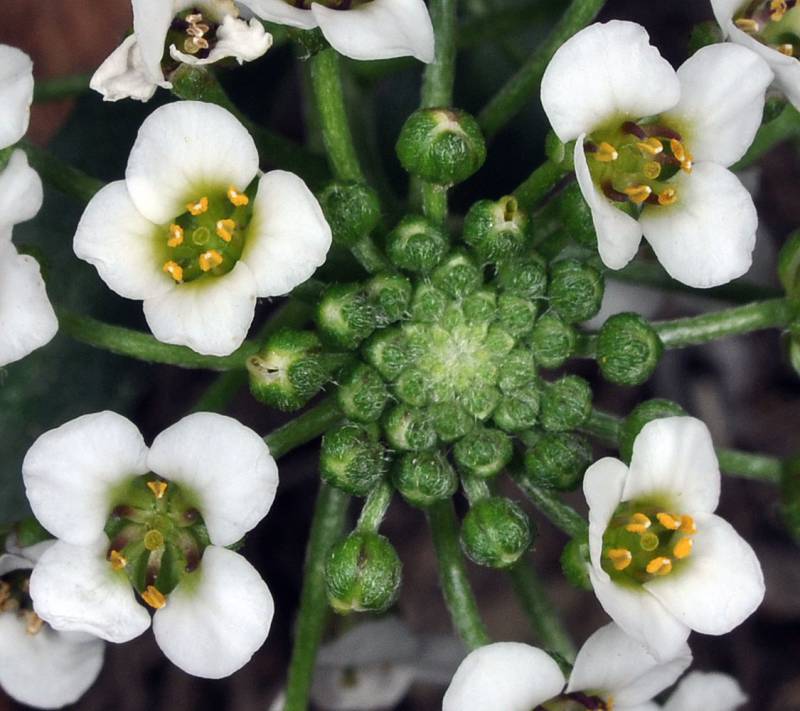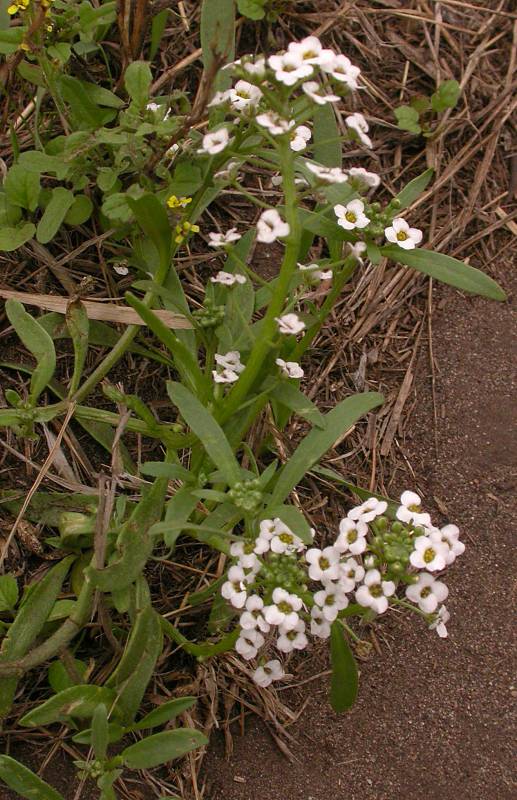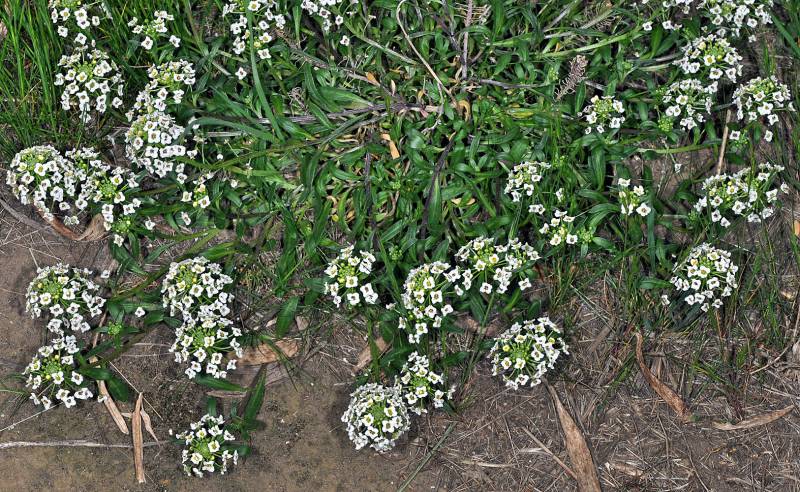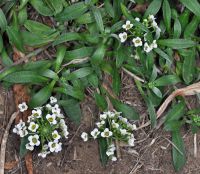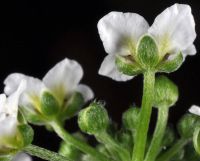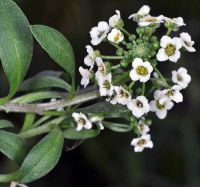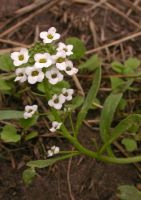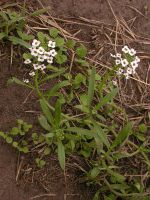Distribution: Occurring chiefly west of the Cascades crest in Washington; British Columbia to California and southwestern U.S., eastward to also occurring throughout central and eastern North America.
Habitat: Escaping from cultivation to roadsides, pastures, and other disturbed areas, often where moist.
Flowers: April-August
Origin: Introduced from the western Mediterranean
Growth Duration: Annual, Perennial
Conservation Status: Not of concern
Pollination: Bees, flies, butterflies
Grayish, spreading annual with fragrant flowers, the stems branched from the base, 1-3 dm. tall; herbage with small, appressed, aligned, pick-shaped hairs.
Leaves alternate, linear-oblanceolate, entire,1-4 cm. long and 1-4 mm. broad.
Inflorescence usually of several terminal racemes; pedicles slender, spreading, 5-10 mm. long; sepals 4, 1.5-2 mm. long, soon deciduous; petals 4, white or bluish-tinged, 3-4 mm. long, broadly ovate and short clawed; stamens 6, glands flanking the short filaments oblong, 1 mm. long; style 0.5 mm. long.
Siliques often purplish, oval-elliptic, strongly compressed, 2.5-3.5 mm. long, acute, sparsely hairy; seeds 1 per cell.
Publication: J. Bot. Agric. 3: 162. 1815.
Clypeola maritima L.
Koniga maritima (L.) R. Br. [Abrams]
PNW Herbaria: Specimen records of Lobularia maritima in the Consortium of Pacific Northwest Herbaria database
WA Flora Checklist: Lobularia maritima checklist entry
OregonFlora: Lobularia maritima information
E-Flora BC: Lobularia maritima atlas page
CalPhotos: Lobularia maritima photos

